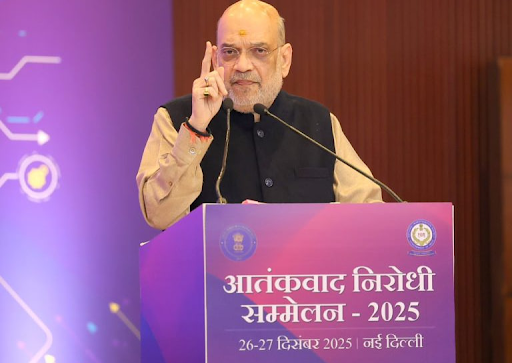Description
.jpg)
Disclaimer: Copyright infringement not intended.
Context
- Russia has issued a stern warning to Japan, expressing concerns over its decision to export Patriot PAC-3 anti-aircraft missiles to the United States.
- Moscow argues that this move has negative implications for global security and could strain relations between Russia and Japan, especially if the munitions find their way to Ukraine.
Details
- This decision signifies a significant shift in Japan's military export policy, marking the first time since World War II that Japan has exported weapons.
- Russian Concerns and Criticism:
- Russia has voiced strong opposition and issued a warning to Japan over its decision to export Patriot PAC-3 anti-aircraft missiles to the United States.
- Russian Foreign Ministry emphasized that this departure from Japan's pacifist principles, combined with the transfer of weapons to the U.S., could have adverse consequences for regional and global security.
- Concerns Over Potential Escalation:
- There are fears in Russia that the Japanese-made Patriot missiles, while not intended for Ukraine directly, could indirectly facilitate the delivery of U.S.-made Patriots to Kiev, possibly replacing them in U.S. stocks.
- Such a scenario is viewed as a hostile action against Russia, with concerns raised about Japan's potential loss of control over the use and deployment of these weapons.
- Japanese Perspective and Response:
- Japanese Prime Minister reaffirmed Japan's commitment to its pacifist principles.
- However, this move is seen as part of Japan's broader military buildup initiated by Kishida, aiming to increase defense spending significantly.
- Japan seeks to become one of the world's top defense spenders, following the U.S. and China, with recent approval of a record 16% increase in military spending.
- Geopolitical Tensions:
- Tensions between Russia and Japan have escalated due to Russia's actions in Ukraine.
- Japan, alongside Western allies, imposed economic sanctions on Russia.
- The strained relations also relate to the unresolved territorial dispute over the Kuril Islands, hindering the formal conclusion of a World War II hostilities treaty between the two nations.
- Ukraine's Recognition of Japanese Territory:
- In a significant move, Ukraine's Parliament recognized two disputed islands in the Kuril Islands chain, Habomai and Shikotan, as Japanese territory.
- This declaration came amidst Russia's attempts to annex Ukrainian territories, further complicating the geopolitical landscape and potentially impacting Japan-Russia relations.

About Patriot system
- The Patriot missile system, formally known as the Phased Array Tracking Radar to Intercept of Target (PATRIOT), stands as a crucial ground-based Air and Missile Defense (AMD) system safeguarding ground forces and vital assets from a spectrum of threats including advanced aircraft, cruise missiles, and Tactical Ballistic Missiles (TBMs).
- Particularly, the PATRIOT Advanced Capability – 3 (PAC-3) serves as the Army's primary guided AMD system, offering high-reactive hit-to-kill capabilities across various ranges and altitudes, functioning effectively in diverse environments.
Key Components of the PATRIOT System:
- Fire Unit: Comprises the Radar Set (RS), Engagement Control Station (ECS), and Launching Stations (LS). RS provides comprehensive airspace surveillance, target detection, discrimination, and simultaneous tracking, while ECS ensures command and control functionalities. LS, controlled remotely from ECS, handles transport and missile launch, accommodating 12-16 PAC-3 missiles.
- PAC-3 Missile: Initially deployed in 2001, this missile introduced hit-to-kill technology, enhancing lethality against various threats including TBM, cruise missiles, and aircraft by combining a highly responsive airframe with attitude control motors.
- PAC-3 Missile Segment Enhancement (PAC-3 MSE): Launched in 2015, PAC-3 MSE represents an upgraded version, bolstering battlespace performance against evolving threats via improvements in rocket motor, control surfaces, guidance software, and munitions.
Acquisition and Modernization:
- The Army acquired milestone authority for PAC-3 in 2004, with continuous modernization efforts aimed at enhancing system capabilities and resilience against advanced threats.
- Integration with the Integrated Air and Missile Defense Battle Command System networked architecture is underway.
Benefits and Global Deployment:
- PATRIOT has proven its worth as a combat-tested ground-based AMD system, deployed across 17 countries.
- Fourteen partner nations have acquired or deployed the system to fulfill their AMD requirements.
Specifications and Program Status:
- Specifications encompass advanced multifunction radar, engagement control operations, launcher capabilities, and support by ancillary communications and maintenance ground equipment.
- Key milestones include PAC-3 MSE's First Unit Equipped in 1QFY16, Full Rate Production (FRP) approval in 3QFY18, and ongoing development and integration activities projected till FY23.
Projected Activities and Contractors:
- Future activities include PAC-3 MSE integration within the Integrated Air and Missile Defense Battle Command System network architecture, executing FRP, and extensive Foreign Military Sales (FMS).
- Lockheed Martin (Dallas, TX) manages the Missile Program, assembly conducted in Camden, AR, and system integration/ground equipment by Raytheon (Andover, MA).

Foreign Military Sales (FMS):
- Several nations, including Germany, Japan, Korea, Kuwait, Netherlands, Poland, Qatar, Romania, Saudi Arabia, Taiwan, and the United Arab Emirates, have expressed significant interest in acquiring PAC-3 MSE.
|
PRACTICE QUESTION
Q. Japan's approval to export Patriot PAC-3 anti-aircraft missiles to the United States has sparked geopolitical concerns, particularly drawing a stern warning from Russia. Analyze the implications of Japan's shift in its military export policy, highlighting its historical significance and the concerns raised by Russia. (250 Words)
|




.jpg)
.jpg)




